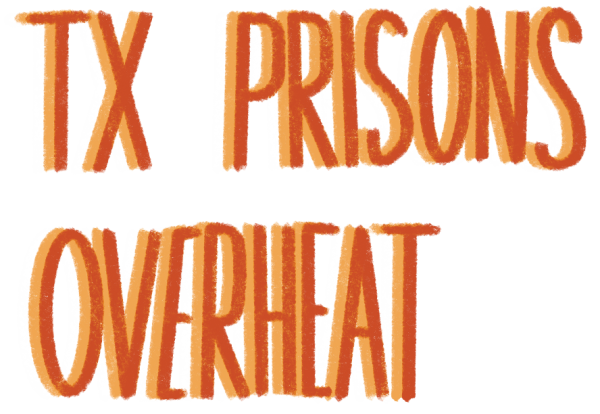Issue 5 staff stance: Life in Limbo: Government shutdown politics
February 19, 2019
After 35 days, amid an increasingly bipartisan backlash and an emerging consensus that air safety was becoming imperiled, President Trump reopened the government – for now. He did not apologize for creating a wholly unnecessary and costly crisis in his Jan. 25 address from the White House Rose Garden. He did, however, congratulate himself for ending the shutdown, declaring, “I am very proud to announce today that we have reached a deal to end the shutdown and re-open the federal government.”
This topsy turvy characterization of the moment was fitting given Trump’s typically fact-free message stylings throughout the shutdown. On Dec. 24 Trump sulkily tweeted “poor me” regarding the personal toll the shutdown was taking on him personally. He continuously railed about “his” wall and the border security “crisis” that he created and which left 800,000 federal workers across nine different departments furloughed or working without pay.
TSA agents, air traffic controllers, food inspectors, and Coast Guard personnel, among other federal workers deemed “essential” and therefore required to work for no pay, missed two paychecks over the course of the shutdown, many having to turn to charitable food pantries to feed their families. The Department of Agriculture’s National School Lunch Program, which serves more than 30 million students annually, was forced to begin contingency planning to manage the anticipated lapse in funding. Volunteers scrambled to protect our national parks from ruin as park service employees remained off the job. National parks, some of the most glorious crown jewels of these United States, were reportedly overrun by garbage and human waste from the shutdown.
Joshua Tree National Park, unprotected and vulnerable, saw its trees hacked off for kicks or trophies by unruly visitors. This repercussion seems a particularly apt metaphor for the State of our Union precipitated by the Trump Administration’s ineffectual shutdown politics.
On Dec. 21, funding for 25 percent of the government (those nine federal departments) expired. Trump had refused to sign off on a bipartisan budget agreement, authored when Republicans held control of both the House and the Senate, and which he’d previously indicated he’d support, because it did not meet his demand for 5.7 billion dollars of funding to build a physical wall along the southern border of the United States.
Trump claimed in a prime time address to the nation on Jan. 8 that this demand, and the shutdown, was justified given the “growing humanitarian crisis” at the border: the integrity of borders threatened by hordes of immigrants, a burgeoning criminal element preying upon desperate migrants and overwhelmed border personnel. However, the facts do not support this claim. Illegal immigration in the United States is not predominantly a product of a porous southern border. According to a Jan. 1 NPR article, the most recent report from the Department of Homeland Security indicates that the lion’s share of illegal immigration results from people overstaying their legally obtained visas. Moreover, recent data published by Customs and Border Protection shows that apprehensions at the border are at their lowest levels since 1971. What’s more, the US Drug Enforcement Administration’s own data clarifies that the majority of drugs entering the United States do so through legal checkpoints and are carried in by American citizens.
True, the El Paso sector has seen a rise in detentions. However, this growth is comprised predominantly of family units fleeing the violence and economic scarcity of their home countries in Central America and hoping to apply for asylum in the United States at a legal port of entry.
While spending on the wall is unlikely to make the border more secure, as Krishnadev Calamur explained in a Jan. 11 piece for The Atlantic, it would be meaningful to commit resources to fixing our broken asylum system and renovating and properly staffing ports of entry. These investments would make us safer. Notably, Republican Texas Congressman Will Hurd, whose district encompasses the largest section of the U.S.-Mexican border, confirmed to Rolling Stone reporter Andy Kroll in a Jan. 18 article that, “building a wall from sea to shining sea is the most expensive and least effective way to do border security.”
Underscoring Hurd’s point, news broke Jan. 18 that the largest single group of asylum seekers arriving to date turned themselves in to Customs and Border Protection Agents after successfully tunneling under the border wall near Yuma, Arizona.
That same day, findings from a Health and Human Services Inspector General’s office report were published confirming that many more children than previously reported have been separated from their families since the implementation of the Trump administration’s immigration policies. The whereabouts of many of these separated children are unknown, likely unknowable, given sloppy and inconsistent tracking. Here lays the “humanitarian crisis,” and it is one of Trump’s making.
President Trump’s government shutdown was the longest in American history, rivaling even the 1995-1996 shutdown during the Clinton administration triggered by President Bill Clinton and then-Speaker of the House Newt Gingrich’s dispute over Gingrich’s proposed budget cuts. Then, as now, the impasse reflected a stark difference in priorities: Gingrich sought significant reductions in overall government spending, and Clinton aimed to expand federal contributions to Medicare, education, and the environment.
Trump’s game of shutdown politics is also about priorities. But Trump’s priorities have always been less a product of policy objectives and more a function of personal ambition. Shutting down the government to get his 5.7 billion would have fulfilled a campaign promise. And Trump and his advisors seem to believe that “promises made/promises kept” are Trump’s ticket to success in 2020.
In the wake of the Dec. 2018 news regarding Trump’s willingness to back a budget compromise, pundits like Ann Coulter and Laura Ingraham repeatedly admonished Trump that his presidency will be a failure if he does not secure the 5.7 billion and make good on his campaign commitment to “build a wall.” Trump’s turnaround on that bipartisan budget agreement reflected his focus on remaining in good standing with his base and the conservative commentators whose favor he curries.
Coulter continues to gin up fury for anything less than a wholesale, literal accession to Trump’s demand. In response to Trump’s Jan. 19 proffer of temporary protection for DACA recipients in exchange for his wall funding, Coulter tweeted, “Better to leave ‘Dreamers’ in limbo than to leave them in our country.”
“Limbo” is apparently the new normal for all of us. In less than 21 days, if border wall funding is not negotiated to Trump’s satisfaction, Trump could shutdown the government again. Asked whether that’s actually a possibility, given the roundly castigated reviews of the just-concluded shutdown episode, Mike Mulvaney, Trump’s newest Chief of Staff said on Jan. 27, “[Trump’s] willing to do whatever it takes to secure the border.”







